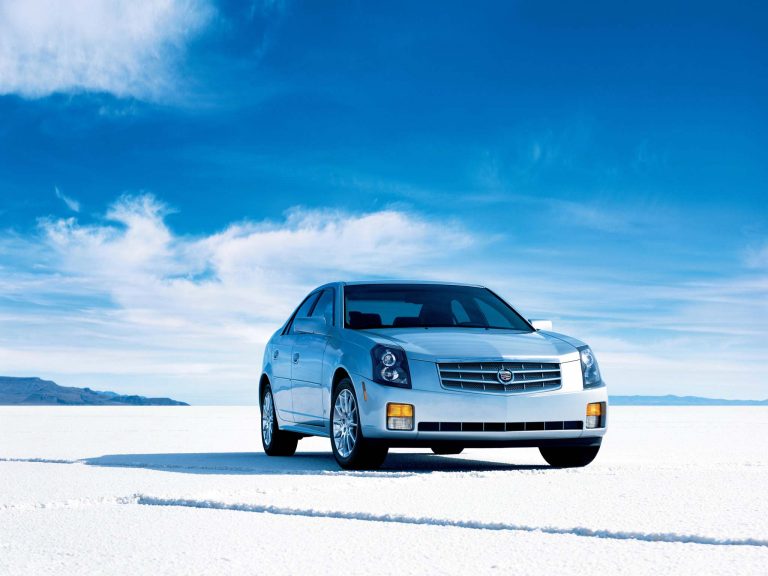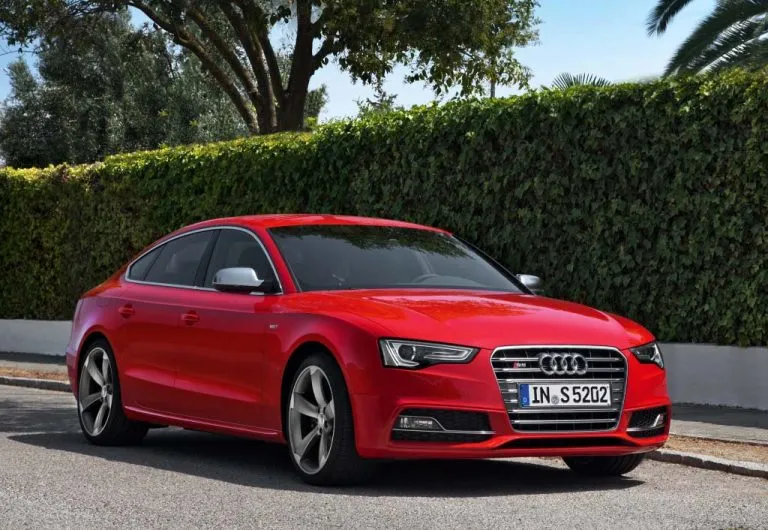Can You Wax Ceramic Coating? Insights on Coated Cars
Ceramic coatings have gained popularity among car enthusiasts for their exceptional protective qualities and long-lasting shine. But, with the rise of ceramic coatings, a common question arises: can you wax ceramic coating? The answer is yes, you can apply car wax on top of a ceramic coating. However, waxing over a ceramic coating may cause more issues than solutions.
One of the benefits of applying car wax on top of a ceramic coating is that it adds an extra layer of protection on top of the already perfected ceramic coat. Whilst ceramic coatings are very durable, they can still show scratches or can be affected by contaminants. By waxing over a ceramic coating, you’re providing a temporary shield that can further protect the surface. Waxing can help extend the longevity of your ceramic coating with proper maintenance.
On the flip side, applying wax to a ceramic-coated surface can also cause some problems. Wax may not bond well with the ceramic coating, resulting in unwanted residue and uneven protection. Instead, consider using a high-grade SiO2 ceramic booster spray for optimal protection and care. In this article, we’ll delve into everything you need to be aware of to successfully add an extra layer of shine and protection on-top of a ceramic coating.
TLDR Summary
Curiosity is something that crosses everyone’s mind, and we’re here to answer the question, can you wax ceramic coating? Good news! You absolutely can wax over a ceramic coated surface. But keep in mind doing so may cause more issues than solutions.
Instead of using wax, there’s an optimal way to achieve the same result in a more consistent manner, you should always routinely clean your car, garage it, and apply a high-quality SiO2 ceramic booster over your coating. These methods have proven time and time again to be the best form of protection for your ceramic coating.
When it comes to polishing, always polish your car before applying a ceramic coating, this makes sure that you can’t see any nasty blemishes or scratches under the ceramic coating once it’s applied, making your car look new, you won’t need to polish after you apply the coating.
To maintain, you can polish once or twice a year, with a one step polishing process it will restore your vehicle’s like-new appearance, remove fine scratches and maintain the clarity of the clear coat, but keep in mind this will reduce the thickness of the ceramic coat on your car and you should re-apply the ceramic coat to top it up.
If you’re considering applying a ceramic coating to your windshield or other glass surfaces, look for a Ceramic Glass Coating product, designed specifically for glass. This product was specially designed to bond well with glass surfaces and offers fantastic water-repelling properties.
Remember to keep your ceramic coating clean and free of debris or harmful contaminants, as this is the key to longevity. Although applying wax over a ceramic coating is possible, it’s not the best idea. Stick to the proven methods mentioned above for the best results in protecting your car’s finish!
Understanding Ceramic Coatings
Nano-Ceramic Coating
A nano-ceramic coating is a cutting-edge technology that protects your vehicle’s paint with an ultra-thin durable layer. These coatings are known for their long-lasting protection, as they can last up to a lifetime with proper care and annual inspections. Additionally, nano-ceramic coatings bring an incredible shine and a hydrophobic effect to your car’s surface, making it easier to maintain and keep clean.
Silicon Dioxide
One of the main ingredients in ceramic car coatings is Silicon Dioxide (SiO2). SiO2 creates a chemical bond with your vehicle’s paint, forming a resilient and long-lasting layer of protection. This protective layer resists various types of dirt and water and prevents water spotting, ultimately maintaining the finish of your car for a much longer period than traditional waxes.
Liquid Polymer
A liquid polymer is another vital component in ceramic coatings. This polymer acts as a binding agent between the Silicon Dioxide and your vehicle’s paint. As the coating cures, it forms a flexible yet durable shield that helps keep your car’s surface clean, enhances the gloss, and extends the lifespan of your paint job.
In summary, ceramic coatings consist of nano-ceramic technology, Silicon Dioxide, and liquid polymers to provide an exceptional barrier of protection for your vehicle’s paint. If properly maintained, these coatings can outperform traditional waxes and provide superior shielding from various contaminants and environmental factors.
Ceramic Coatings vs Traditional Wax and Sealants
Carnauba Wax
There are a million different options to choose from when it comes to protecting your car and getting the best shine. Carnauba wax is a popular choice for traditional car wax derived from the leaves of the carnauba palm. This natural wax provides a beautiful shine and a decent level of protection for your car’s clear coat.
However, its durability leaves something to be desired, as it typically lasts only 1-3 months before needing reapplication. While it can enhance the appearance of your car, its hydrophobic properties are not as impressive as other options on the market.
Paint Sealant
Paint sealants are synthetic protectants that offer more durability than carnauba wax. They can last for up to 6-12 months, providing a longer-lasting layer of protection for your car’s paint. The clear coat is preserved, and the hydrophobic properties of paint sealants are stronger than carnauba wax, making it easier to keep your vehicle clean and looking great.
In comparison to traditional waxes and sealants, ceramic-based protectants offer a higher level of protection for your car’s paint. Ceramic coatings are liquid polymers derived from various compounds such as quartz, silica, and silicone-dioxide. These coatings bond chemically with your car’s paint, providing a strong and durable barrier against various contaminants.
| Protectant | Durability | Hydrophobic Properties | Protection |
|---|---|---|---|
| Carnauba Wax | 1-3 months | Moderate | Moderate |
| Paint Sealant | 6-12 months | High | High |
| Ceramic Coating | 2-5 years | Very High | Very High |
A major advantage of ceramic coatings over traditional wax and sealant options is their long-lasting nature. Ceramic coatings typically last for years, not months, meaning you won’t need to reapply them as frequently. This quite obviously will save you a ton of time in the future.
Moreover, the hydrophobic properties of ceramic coatings outshine those of traditional waxes and sealants. With a ceramic coating, you’ll find that water, dirt, and other contaminants have a harder time sticking to your car, making it easier to keep your vehicle clean.
In summary, both carnauba wax and paint sealants offer some level of protection for your vehicle’s paint. Nevertheless, ceramic coatings provide superior durability and hydrophobic properties, making them a strong contender for car owners seeking the best protection for their vehicles’ paint.
Advantages of Ceramic Coatings
Ceramic coatings offer many benefits to vehicle owners. One of the main advantages is the extra layer of protection they provide for your car’s paint. This protective barrier shields your car from harmful UV rays and other environmental contaminants, ensuring that your car’s surface remains in top-notch condition.
Another advantage of ceramic coatings is their hydrophobic properties. Having a hydrophobic surface means that water and dirt will have a hard time sticking to your car’s surface, making it much easier to clean. This means your car will stay cleaner for longer.
Ceramic coatings are also versatile in their application. Unlike traditional waxes and sealants, which are primarily used on painted body panels, these coatings can be applied to various parts of your vehicle. This includes your car’s trim, wheels, glass, and even interior components like the dashboard and leather seats! This makes ceramic coatings a comprehensive solution for protecting your entire vehicle.
Additionally, ceramic-coated cars are more resistant to light abrasions and scratches than those with only conventional wax. This added durability helps maintain the integrity of your car’s paint, giving you peace of mind that your pride and joy is well taken care of.
Finally, by applying a high-grade SiO2 ceramic booster spray over ceramic coatings, you can extend the coating’s longevity. Proper maintenance, such as routine ceramic booster, will improve the longevity of your coating, providing ongoing protection for your vehicle. With all these advantages in mind, it’s easy to see why ceramic coatings are becoming the popular choice among car owners.
Can You Wax a Ceramic Coated Car
Top of a Ceramic Coating
You may wonder if it’s possible or even necessary to apply wax on top of a ceramic coating, considering it’s already protecting the car. The short answer is you can apply wax on a ceramic coated surface, but it may not be the best idea.
Wax Over Ceramic Coating
Waxing over the coating can actually cause more problems than it solves. If you decide to apply wax, it can interfere with the ceramic coating’s ability to bond with the paint, reducing its effectiveness and durability. Instead, focus on keeping the ceramic coating clean and in good condition by following these steps:
- Routine cleaning: Regularly wash your car with a gentle soap and soft cloth to remove dirt and debris.
- Gentle drying: Use a soft microfiber towel to dry your car after washing to avoid scratches.
- Garage storage: Protect the coating by keeping your car in a covered space when not in use, avoiding direct sunlight and harmful elements.
- Apply SiO2 ceramic booster spray: This will increase and maintain the protection offered by the ceramic coating.
Ceramic Coating and Car’s Paint
Ceramic coatings are designed to bond directly with your car’s paint. They provide excellent protection from UV rays, scratches, and chemicals, keeping your paint in pristine condition. Wax, on the other hand, is a temporary barrier that needs constant reapplication.
When you apply wax on top of a ceramic coating, you are essentially adding an unnecessary layer that can complicate the maintenance process. We have to make it clear here that according to the detailers out there in the world, a good ceramic coating itself should provide all the protection your car’s paint needs.
In summary, although you can technically apply wax on a ceramic coated car, it is not recommended due to potential interference with the ceramic coating’s performance. Stick to maintaining your ceramic coating with proper cleaning techniques and use a SiO2 ceramic booster spray for added protection.
How to Properly Maintain and Protect Ceramic-Coated Surfaces
Sacrificial Layer
A great way to ensure the longevity of your ceramic coating is by applying a sacrificial layer on top of it. This layer protects against bird droppings, tree sap, acid rain, natural oils, and other harmful contaminants that can damage your ceramic coating.
Using a high-quality wax or sealant on ceramic-coated surfaces creates a barrier against these elements, preventing damage to the coating itself. Make sure to follow directions carefully and reapply the sacrificial layer as needed to keep your vehicle looking its best.
Clay Bar
Over time, dirt and contaminants can build up on your vehicle’s surface and embed themselves into the ceramic coating. This can be incredibly difficult to remove with regular washing alone and can lead to issues like water spots and swirl marks.
To safely remove these contaminants, use a fine clay bar on your ceramic-coated surfaces. A clay bar is a tool used to gently lift away embedded contaminants, leaving behind a smooth and clean surface. It is important to lubricate the surface with a clay bar lubricant and keep the clay bar as clean as possible during use.
Paint Correction
Even the best ceramic coatings may not protect your paint entirely from swirl marks and scratches, which can result from improper washing techniques, automated car washes, or other abrasive materials coming into contact with your paint through day to day use.
To address these issues and maintain the appearance of your ceramic-coated surfaces, paint correction may be necessary. Paint correction is essentially the process of removing defects, such as swirl marks and light scratches, by using a combination of polishing compounds and polishing machines.
Before performing paint correction on your vehicle, you’ll need to prepare the car so you’re working on a clean surface, also keep in mind this will thin out your ceramic coating, so be sure to re-apply it after polishing to maintain full protection.
Paint Protection Film
For added protection, consider installing a paint protection film on top of your ceramic-coated surfaces. This thin layer of urethane material bonds to your vehicle’s paint, forming a durable and protective layer against harmful elements.
Paint protection film provides an extra barrier of defense against rock chips, scratches, and other potential paint damage, making it the perfect complement to your ceramic coating. It is essential that paint protection film installation is performed by skilled professionals, as it requires precise cutting and application to fit the contours of your vehicle properly.
By following our advice, you’ll keep your ceramic-coated surfaces in top condition and extend the life of your protective coatings. Maintaining your vehicle with care will not only keep it looking great but also safeguard your investment.
Choosing the Best Ceramic Coating Products
Professional Grade
When selecting ceramic coating products for your car, it’s essential to consider professional grade options. These high-quality coatings offer superior protection and can last a lifetime with annual inspections. They shield your car from various contaminants, including road salt and harmful UV rays, and are a better option for long-lasting care.
A top-rated professional grade ceramic coating is the CarPro CQuartz UK 3.0. Developed by a pioneering company in the car care industry, this product has a reputation for effectiveness and ease of use. You can trust your car’s finish is in good hands.
Ceramic Spray Coating
For those who prefer a more convenient approach, ceramic spray coatings are an excellent alternative. They definitely won’t last as long as the professional grade options, these sprays still offer great protection for your car’s finish. They are typically easier to apply and can be reapplied as needed, keeping your car looking fresh and protected from the elements.
One highly regarded ceramic spray coating is the Gyeon Q2M Cure Ammo Reflex Pro Top Coat. Not only do these products come at a reasonable price point, but they also provide impressive protection against water, mud, and light surface scratches.
When choosing between professional grade and ceramic spray coatings, consider your skill level and the time you’re willing to invest in applying the coating. Both options have their perks. By selecting the right ceramic coating product, your mind will be at ease with a well-protected car always looking its best.
Additional Considerations and Tips
Personal Preference
When it comes to waxing a ceramic coated car, it is really up to you. Some car owners find that using wax provides an additional layer of protection by filling in any imperfections in the ceramic coating. This can make it easier to remove road grime and sticky substances from your car. On the other hand, some car owners believe that applying wax can cause more issues than solutions and opt for alternative ceramic protectants instead.
Professional Detailer
If you’re considering waxing your ceramic coated car, consulting a professional detailer might be a great choice. They can recommend specific products and techniques that work well for your particular vehicle and coating.
Moreover, a professional detailer can ensure that the wax is applied correctly, avoiding potential problems that may arise from incorrect application, such as streaking or uneven coverage. Additionally, professional detailers are skilled at working in optimal conditions, like avoiding direct sunlight during the waxing process, to get the best results.
DIY Coating
If you prefer doing your own car maintenance, applying wax to a ceramic coated car can still be a feasible option. Just be sure to carefully research different applications and products to find the one that works best for your needs. When applying the wax yourself, make sure you follow the manufacturer’s instructions and don’t work directly in the sun to prevent the wax from drying too quickly.
Keep in mind that the key to maximizing the longevity of any ceramic coating, whether professionally applied or DIY, is thorough cleaning and maintenance. By staying on top of your car care routine, you can help preserve your ceramic coating and enjoy its benefits for years to come.
Wrap Up!
Applying wax on a ceramic-coated surface can be done, but remember that it might cause more problems than it resolves. To keep your car’s ceramic coating in optimal condition, it’s better to perform routine cleaning, store the car in a garage, and use high-quality SiO2 ceramic booster sprays on the coating. These steps ensure that your car’s paint stays well-protected and shines like new.
Ceramic coatings will protect your car for a long time, yet they could still get scratched or damaged by certain contaminants. To add an extra layer of defense to your car’s paint, a wax application could be beneficial. However, applying ceramic coatings over wax won’t provide the desired results, as it prevents the coating from bonding to the paint correctly. So, it’s essential to apply ceramic coatings to bare paint only.
Understanding the right methods and products to use plays a significant role in taking care of your pride and joy. Putting wax on your car’s ceramic coating is an option, but always weigh its pros and cons before making a decision. By following the best practices and taking care of your ceramic coating, you can enjoy its benefits and keep your car looking stunning for years to come.




